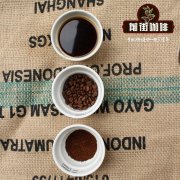Introduction to Kenya How is Kenya coffee graded?
Coffee growing areas of Kenya
Kenya's coffee producing areas are mainly concentrated in Mt. Kenya. Kenya) represents the plateau area. Tropical climate, acidic red volcanic soil for coffee provides a natural suitable growth environment. The main producing areas are Nyeri and Ruiru in the central part.
Kenya coffee varieties
Bourbon Bourbon was first brought to Kenya for cultivation. In the 1950s, Scott Laboratory, an agricultural research institution at that time, made unremitting efforts to select two excellent hybrids SL-28 and SL-34, overturning the long-standing bias that artificial breeding varieties were not excellent in natural varieties. SL-28 and SL-34 help Kenya coffee to form its own unique flavor characteristics and establish a perfect reputation in the coffee industry.
Kenya coffee growing methods
There are mainly two types of large farms (estates) and cooperatives (Cooperatives). The former generally has a larger planting area and independent coffee processing facilities. Most coffee production is done by a large number of small farmers, who form coffee cooperatives. Coffee cooperatives hire managers to oversee their members 'coffee processing, even to the point of managing each coffee tree.
Kenya coffee harvest season
Kenya has two harvest seasons, the main one from October to December and the secondary one from May to July.
Kenya Coffee Processing
Large farms usually have separate treatment facilities. A large number of small farmers usually pick ripe coffee berries by hand. Coffee picking is labour-intensive, requiring the whole family to work and even workers to be hired during harvest season. Fresh coffee needs to be transported in time to a cooperative-owned coffee processing plant for pulping, which may be carried by ox cart, pickup truck or truck. After dehulling, the Parchment coffee is stored briefly in the cooperative's processing plant and then sent to a privately owned plant for dehulling.
Kenya Coffee Grade
Kenya is known for grading coffee beans by particle size. Usually divided into nine grades, according to the bean type, there are PB, that is, round beans, accounting for about 10% of the total yield, in addition to E(elephant beans), AA, AB, C, T, TT, MH, ML according to the size.
AA Plus (AA+) Excellent AA grade in cup quality (flavor, taste)
AA Screen Size 17--18 Size
AB particle size (Screen Size) 15- 16 size, accounting for most of the yield
C particle size (Screen Size) is smaller than AB
TT Light weight beans blown from AA and AB grade beans by air filter
T Light weight beans blown from C grade beans by air filter
E Elephant Bean A large variant of two beans in one, also known as Elephant Ear Bean.
UG does not meet the above criteria
PB Peaberry, classified by appearance, independent of flavor weight

Important Notice :
前街咖啡 FrontStreet Coffee has moved to new addredd:
FrontStreet Coffee Address: 315,Donghua East Road,GuangZhou
Tel:020 38364473
- Prev

What's the difference between Frappie, latte, cappuccino and Australian white coffee?
Professional coffee knowledge exchange more coffee bean information please follow the coffee workshop (the official account of Wechat) sources rumored to have brought espresso to Australia during World War II, the Italians brought espresso to Australia and invented Furebai through the improvement of local people, about whether Furebai originated in Australia or new
- Next

Introduction to the Flavor characteristics of Alvado Wula Manor Coffee
El Salvador, known as the smallest country in Central America and known as the land of volcanoes, has a reputation beyond life in specialty coffee-growing areas. Although coffee was grown mainly for domestic consumption, it became a stable and important crop over the next 100 years, especially in the late 19th century, when the country's indigo exports were synthetically dyed.
Related
- Detailed explanation of Jadeite planting Land in Panamanian Jadeite Manor introduction to the grading system of Jadeite competitive bidding, Red bid, Green bid and Rose Summer
- Story of Coffee planting in Brenka region of Costa Rica Stonehenge Manor anaerobic heavy honey treatment of flavor mouth
- What's on the barrel of Blue Mountain Coffee beans?
- Can American coffee also pull flowers? How to use hot American style to pull out a good-looking pattern?
- Can you make a cold extract with coffee beans? What is the right proportion for cold-extracted coffee formula?
- Indonesian PWN Gold Mandrine Coffee Origin Features Flavor How to Chong? Mandolin coffee is American.
- A brief introduction to the flavor characteristics of Brazilian yellow bourbon coffee beans
- What is the effect of different water quality on the flavor of cold-extracted coffee? What kind of water is best for brewing coffee?
- Why do you think of Rose Summer whenever you mention Panamanian coffee?
- Introduction to the characteristics of authentic blue mountain coffee bean producing areas? What is the CIB Coffee Authority in Jamaica?

